
Categories:
The SR25 rifle, a semi-automatic precision weapon, has carved out a significant place in both military and civilian arsenals since its introduction. Developed by Eugene Stoner and manufactured by Knight’s Armament Company, the SR25 is renowned for its accuracy, reliability, and versatility. It was specifically designed to bridge the gap between traditional sniper rifles and battle rifles, providing marksmen with enhanced firepower while maintaining high precision over extended ranges.
One of the standout features of the SR25 is its integration of the direct impingement gas system, similar to that found in the AR-15 platform. This design choice not only ensures familiar handling for those accustomed to AR-style guns but also contributes to reduced recoil and improved shot follow-up capabilities. Chambered in 7.62x51mm NATO/.308 Winchester, this rifle offers substantial stopping power and range performance suitable for varied operational contexts—from long-range target shooting to tactical engagements.
The SR25’s modularity is another aspect that sets it apart. With a free-floating barrel design, customizable rail systems for optics and accessories, and adjustable stocks, users can tailor their setup to meet specific mission requirements or personal preferences. This adaptability makes it an attractive option for military snipers, law enforcement marksmen, competitive shooters, and hunting enthusiasts alike. However robust and reliable it may be under harsh conditions, the SR25 still demands diligent maintenance to ensure optimal performance.
Regular cleaning routines are essential due to its precise engineering; neglecting this can lead to diminished accuracy or even malfunctions over time. By understanding its unique construction and operational nuances, owners can keep their SR25s running smoothly across countless rounds fired.
Maintaining an SR25 rifle requires a meticulous approach and the right set of tools and supplies to ensure its longevity and optimal performance. At the heart of any maintenance procedure are cleaning kits that include brushes, patches, solvents, lubricants, and rods specifically designed for .308 caliber rifles. These fundamental items are crucial for removing carbon buildup, debris, and moisture that can impair functionality.
A quality torque wrench is indispensable for ensuring that screws and bolts are tightened to manufacturer-specified levels. Over-tightening or under-tightening can lead to malfunctions or damage to the rifle’s components. Additionally, specialized AR-10 armorer’s tools like upper receiver blocks and lower receiver vise blocks provide stability during more in-depth maintenance tasks such as barrel changes or trigger adjustments.
For precision work, a set of high-quality punches and a bench block facilitate safe disassembly without marring the surface of your SR25. Needle-nose pliers come in handy for manipulating small parts during reassembly. Moreover, a dental pick set can be invaluable for reaching into tight spaces to dislodge stubborn residues.
Optics play a critical role in the SR25’s functionality; therefore, lens cleaning pens or microfiber cloths designed specifically for optics should be part of your toolkit. They ensure that your scope remains clear without scratching delicate surfaces.
Finally, keeping track of spare parts such as firing pins, springs, and detents is essential. Having these on hand allows you to replace worn-out components immediately rather than waiting for replacements—a crucial factor when reliability is paramount.
By assembling these essential tools and supplies tailored specifically for the SR25 platform, you set yourself up not only to perform routine maintenance but also to tackle more advanced repairs confidently.
Before embarking on any maintenance tasks for the SR25 rifle, it is paramount to prioritize safety to prevent accidents and ensure a smooth process. The first step is to confirm that the gun is completely unloaded. This involves removing the magazine and visually inspecting the chamber to ensure no rounds are present. A thorough physical check should follow, feeling into the chamber with your finger as an added precaution.
Next, it’s essential to relocate your maintenance activities away from any ammunition storage areas. Keeping ammunition separate from your workspace minimizes the risk of accidental loading or discharge. Establishing a clean, well-lit environment allows for better visibility and reduces potential hazards associated with poor lighting or clutter.
Wearing appropriate personal protective equipment (PPE) cannot be overstated. Safety glasses shield your eyes from solvents, oil splashes, or small flying parts during disassembly and cleaning processes. Gloves are also advisable; they protect your skin from harsh chemicals found in cleaning agents while providing better grip and control over small components.
Ensure all tools and materials needed for maintenance are within arm’s reach before starting. This minimizes unnecessary movement around the workspace, which could lead to distractions or accidents. Additionally, using non-flammable solvents in a well-ventilated area helps prevent inhalation of toxic fumes and reduces fire risks.
Finally, always adhere to manufacturer guidelines specific to the SR25 rifle during maintenance procedures. These guidelines provide critical information tailored for safe handling and upkeep of this particular model.
By meticulously following these safety precautions before beginning maintenance on your SR25 rifle, you not only safeguard yourself but also maintain the integrity and longevity of your gun.
Disassembling the SR25 rifle is a crucial step in its maintenance process, ensuring that each component is thoroughly cleaned and inspected for wear or damage. Begin by ensuring the rifle is unloaded; remove the magazine and check the chamber to confirm it is clear of any ammunition. Safety should always be your top priority. Once you’ve confirmed the rifle is safe, start by separating the upper and lower receivers.
This can be done by pushing out the takedown pins located at the front and rear of the lower receiver. With these pins disengaged, gently pull apart the two halves of the rifle. You may need to wiggle them slightly to overcome any tightness caused by manufacturing tolerances or accumulated debris. Next, focus on removing the bolt carrier group (BCG) from the upper receiver.
Pull back on the charging handle until it stops, then slide out both components together. The BCG can then be disassembled further by removing its firing pin retaining pin and extracting other internal parts like cam pins and bolts for detailed cleaning. The gas system also requires attention during disassembly. Detach any rail systems or handguards that might obstruct access to your gas block or tube, allowing you to inspect these components for carbon buildup or other obstructions that could affect performance.
Finally, examine smaller parts such as springs, detents, and pins within both receivers. These often-overlooked elements are essential for reliable function but can wear down over time. Proper documentation throughout this process can help in reassembly later on; taking photos at various stages ensures all parts are returned to their correct positions without confusion.
Cleaning the barrel and chamber of your SR25 rifle is crucial for maintaining its accuracy, reliability, and longevity. Over time, carbon deposits, copper fouling, and other residues can accumulate in these areas, impairing the rifle’s performance. Proper cleaning ensures that the barrel remains free of obstructions and that the chamber can securely house a round. Start by ensuring the rifle is unloaded and safe to handle.
Remove any magazines and check the chamber for any remaining rounds. Disassemble the rifle according to the manufacturer’s instructions to gain access to both the barrel and chamber. For cleaning the barrel, use a bore guide to protect it from damage while pushing a cleaning rod through it. Attach a bore brush soaked in an appropriate solvent designed for carbon and copper fouling removal.
Gently push it through from breach to muzzle several times to loosen up residues adhering to the barrel’s interior walls. Follow up with patches soaked in solvent until they come out clean, indicating that most of the fouling has been removed. Once satisfied with this initial cleaning phase, switch to dry patches on your cleaning rod. Push them through repeatedly until they exit without any traces of solvent or residue on them.
This step ensures that no residual chemicals remain inside that could affect subsequent shooting sessions. Next, focus on cleaning the chamber meticulously using specialized brushes designed for this purpose or a chamber mop soaked in solvent. Scrub thoroughly but carefully around all surfaces where cartridges sit during firing cycles.
Proper lubrication of key components in the SR25 rifle is crucial for ensuring its reliability and longevity. The process begins with selecting the appropriate lubricant. High-quality gun oils or synthetic lubricants specifically designed for guns are recommended, as they provide optimal protection against wear, corrosion, and debris accumulation. Begin by ensuring the rifle is unloaded and safe to handle. Disassemble the SR25 according to the manufacturer’s instructions to access critical internal components.
Key areas that require attention include the bolt carrier group (BCG), charging handle, and trigger assembly. The BCG is a focal point for lubrication due to its dynamic role during firing cycles. Apply a light coat of lubricant on the bolt’s cam pin, gas rings, and exterior surfaces of the carrier. This ensures smooth movement within the upper receiver while reducing friction-related wear.
Pay particular attention to high-contact areas such as locking lugs on both the bolt and barrel extension. Next, lubricate the charging handle where it interfaces with the upper receiver. A thin layer here will facilitate easier operation without compromising cleanliness. For the trigger assembly, apply a minimal amount of lubricant on pivot points and sear surfaces. Over-lubrication in this area can attract dirt and grime, potentially hampering performance over time.
Additionally, lightly oiling other moving parts like magazine release buttons or safety selectors can enhance their functionality without excessive build-up. After lubricating these components, reassemble your SR25 carefully and perform a function check to ensure everything operates smoothly. Regular maintenance schedules should be adhered to based on usage frequency; however, always inspect your gun after each use to determine if additional lubrication is necessary.
Maintaining the SR25 rifle in prime condition requires regular inspection and timely replacement of worn parts. This not only ensures reliable performance but also extends the life of the gun. Begin by disassembling the rifle according to the manufacturer’s guidelines, paying close attention to each component as it is removed. Key areas to inspect include the barrel, bolt carrier group, trigger assembly, and gas system.
The barrel should be checked for any signs of erosion or pitting, particularly around the chamber and muzzle. A bore scope can be an invaluable tool in this regard, allowing for a detailed examination of internal surfaces that are otherwise difficult to assess. The bolt carrier group is another critical area where wear can compromise function. Inspect the bolt face for cracks or deformation, and check the gas rings for uniformity—these should create a snug fit without excessive play.
The cam pin and firing pin should also be scrutinized for wear; any irregularities here can lead to misfires or failures to cycle properly. In the trigger assembly, look out for worn sear surfaces which can affect trigger pull weight and consistency. Springs should retain their tension; any that appear compressed or misshapen need replacement. The gas system demands careful attention as well.
Ensure there are no carbon build-ups obstructing gas flow which could impede cycling reliability. Gas tubes and blocks must be clear of debris and securely fitted. When replacing parts, always opt for high-quality components from reputable manufacturers to ensure compatibility and durability. Keeping a logbook detailing inspections and replacements helps track maintenance schedules effectively, ensuring your SR25 remains operationally ready at all times.
Reassembling and function testing the SR25 rifle is a critical phase that ensures the weapon operates flawlessly after maintenance. Begin by ensuring all components are clean, dry, and free of debris. Start with the lower receiver assembly; reattach the trigger group if it was removed, ensuring all pins and springs are properly seated. Next, position the bolt catch lever and magazine release mechanism securely in place.
Move to the upper receiver assembly; insert the charging handle partway into its track before sliding in the bolt carrier group (BCG). Ensure that the gas key aligns correctly with the charging handle groove. Once aligned, push both components fully into place until they lock securely. Attach the upper and lower receivers together using their pivot pins, confirming they snap into position without resistance.
Securely mount any optics or accessories removed during disassembly. Check that mounting screws are tightened to their appropriate torque specifications to avoid misalignment or detachment during use.
The final step involves a comprehensive function test to confirm operational integrity. Perform a safety check to ensure no live ammunition is present before proceeding. Cycle the action manually several times to verify smooth operation of moving parts. Engage and disengage both safety mechanisms, confirming positive engagement each time.
Conduct a dry fire test by cocking the hammer and pulling the trigger while observing for proper sear engagement and release without undue friction or hesitation. Verify magazine insertion and ejection functions correctly by using an empty magazine.
Address any irregularities immediately to prevent potential malfunctions during use. Successful reassembly paired with thorough function testing guarantees your SR25 rifle remains reliable under field conditions, preserving performance standards set forth by its design.
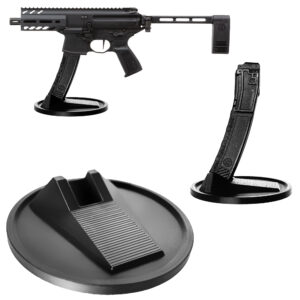
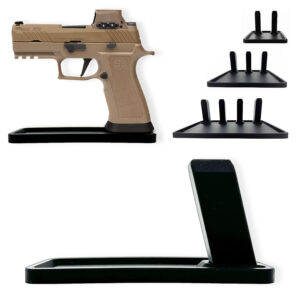
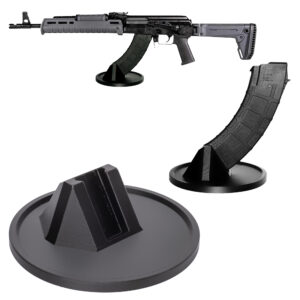


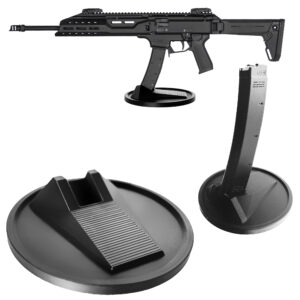
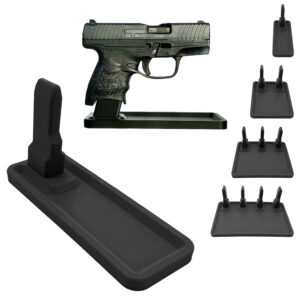

Colt
Colt M4 Carbine
Colt LE6920
Colt AR-15 A4
Daniel Defense
DDM4 V7
DDM4 V9
DDM4 V11
DDM4 ISR (Integrally Suppressed Rifle)
Smith & Wesson (S&W)
M&P15 Sport II
M&P15 Tactical
M&P15T
Bravo Company Manufacturing (BCM)
BCM Recce-16
BCM Recce-14
BCM MCMR Series
Aero Precision
M4E1 Series
AC-15
AR15 Pistol (Various Configurations)
Ruger
Ruger AR-556
Ruger SR-556
Ruger AR-556 MPR (Multi-Purpose Rifle)
Springfield Armory
Saint Victor
Saint Edge
Saint AR-15
PSA (Palmetto State Armory)
PSA PA-15
PSA AR-V
PSA Jakl (AR Pistol)
FN America
FN 15 Tactical Carbine
FN 15 Patrol
FN 15 DMR
Wilson Combat
Recon Tactical
Super Sniper
Protector Carbine
SIG Sauer
SIG M400 Tread
SIG M400 Elite
SIG M400 SDI
LWRC International
IC DI (Direct Impingement)
IC SPR
IC A5
Bushmaster Guns
XM-15 QRC
Bushmaster MOE
XM-15 Patrolman
Rock River Arms
LAR-15 Entry Tactical
LAR-15 Predator
LAR-15 Elite Comp
Stag Arms
Stag 15 Tactical
Stag 15L (Left-Handed Models)
Stag 15 Valkyrie
Noveske Rifleworks
Noveske Gen 4 N4
Noveske Space Invader (AR Pistol)
Noveske Recon
Anderson Manufacturing
AM-15 Optic Ready
AM-15 M4 Carbine
AM-15 Precision Rifle
Adams Arms
AA-15 Piston Rifle
P2 AARS (Adams Arms Rifle Series)
Black Rain Ordnance
SPEC15 Series
BRO Predator
Fallout 15
Diamondback Guns
DB15 Series
DB15CCMLB
DB15EB
Del-Ton Inc.
DTI-15
Del-Ton Echo 316H
Sierra 316M
Windham Weaponry
Windham SRC
Windham VEX-SS
Windham RMCS-4 (Caliber Conversion System)
Christensen Arms
CA-15 G2
CA-15 Recon
CA-15 Titanium Edition
Patriot Ordnance Factory (POF-USA)
Renegade Plus
P415 Edge
Revolution DI
LaRue Tactical
PredatAR
OBR (Optimized Battle Rifle)
LaRue Stealth 2.0
Battle Arms Development
Workhorse Patrol Carbine
BAD556-LW (Lightweight)
Authority Elite Rifle
Faxon Guns
Ascent AR-15
FX-19 (AR Pistol)
Streamline Ultralight Series
KE Arms
KE-15 SLT (Super Lightweight Tactical)
KE-15 Scout Carbine
Primary Weapons Systems (PWS)
MK1 MOD 2-M
MK116 PRO
MK107 (Piston AR Pistol)
ZEV Technologies
ZEV Core Elite Rifle
ZEV AR15 Billet Rifles
Franklin Armory
BFSIII AR-C1
Militia Model
F17-L (Chambered in .17 WSM)
Seekins Precision
SP15 DMR
NX15 Skeletonized Rifle
Havak Bravo
Aero Precision (Additional Models)
EPC-9 (Pistol Caliber ARs)
VG6 AR Rifles
Barrett Guns
REC7 DI
REC7 Gen II
CMMG
MK4 RCE
Resolute 300
Banshee (AR Pistol)
DPMS Panther Arms
Panther Oracle
Panther LR-308
H&K (Heckler & Koch)
HK MR556A1
HK416 (Military Variant)
Rock Island Armory (Armscor)
VR-80 Tactical AR (Shotgun AR Platform)
Troy Industries
Troy SPC-A3
Troy PAR (Pump Action AR)
Wilson Tactical
Tactical Recon AR
Protector Series
F1 Guns
FDR-15 Skeletonized Rifle
BDRx-15 Series
Juggernaut Tactical
JT-15
JT-10 Precision Rifle
AeroSurplus
Surplus AR-15 Rifles (Budget Models)
Thunder Tactical
AR-15 Basic Carbine
Tactical Builder Sets
Radical Guns
RF-15
Forged AR-Series
Dark Storm Industries
DS-15 Featureless Rifles
DS-10 Typhoon
DRD Tactical
Paratus
Aptus AR Rifles
Bear Creek Arsenal
BCA-15
AR Complete Upper Builds
Aero Survival Rifles (ASI)
ASR Tactical Series
Tactical Edge
WARFIGHTER Series
AR-15 Lightweight Rifles
Lone Star Armory
TX15 DMR
TX15 Carbine
HERA Arms
HERA H7
HERA AR-15 Lower Builds
IWI (Israeli Weapon Industries)
Zion-15
DRD Tactical
Tactical Modular Rifles
Quick-Takedown Rifles
V Seven Weapons
1776 Rifle
Hyperlite Rifle
Core Rifle Systems
Core15 Tac III
Core15 Patrol Rifle
Armalite (Original AR-15 Creator)
M15 Tactical
M15 A4 Carbine
DEF15 (Defensive Sporting Rifle Series)
PSA (Palmetto State Armory Additional Models)
PSAK-47 Hybrid (AR-AK Style Hybrid)
PSA Dagger (Pistol Caliber Configurations)
Odin Works
OTR-15
Odin Recon Rifle
Maxim Defense
MDX-508 PDX (Compact AR Pistol)
MDX-510 Rifle